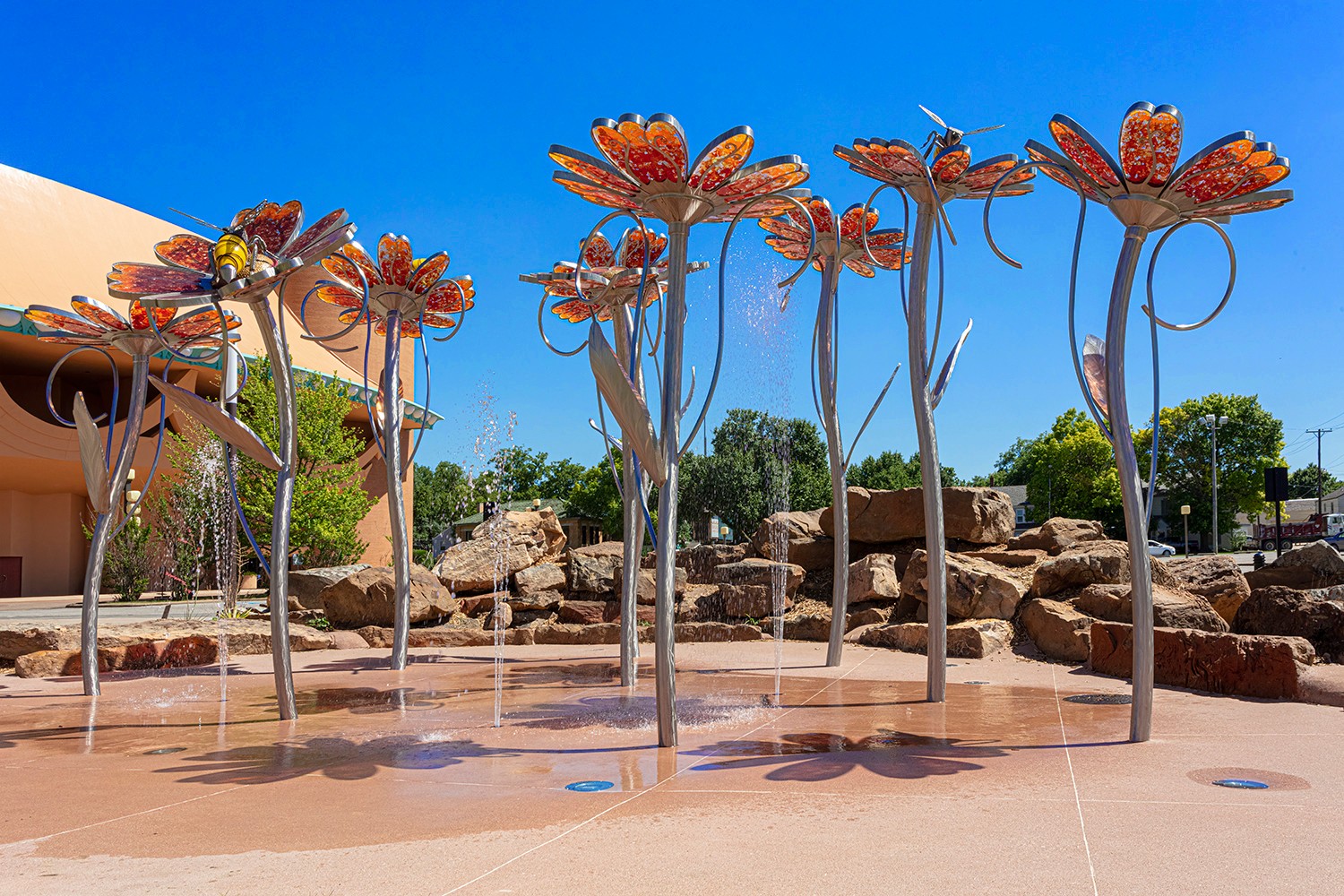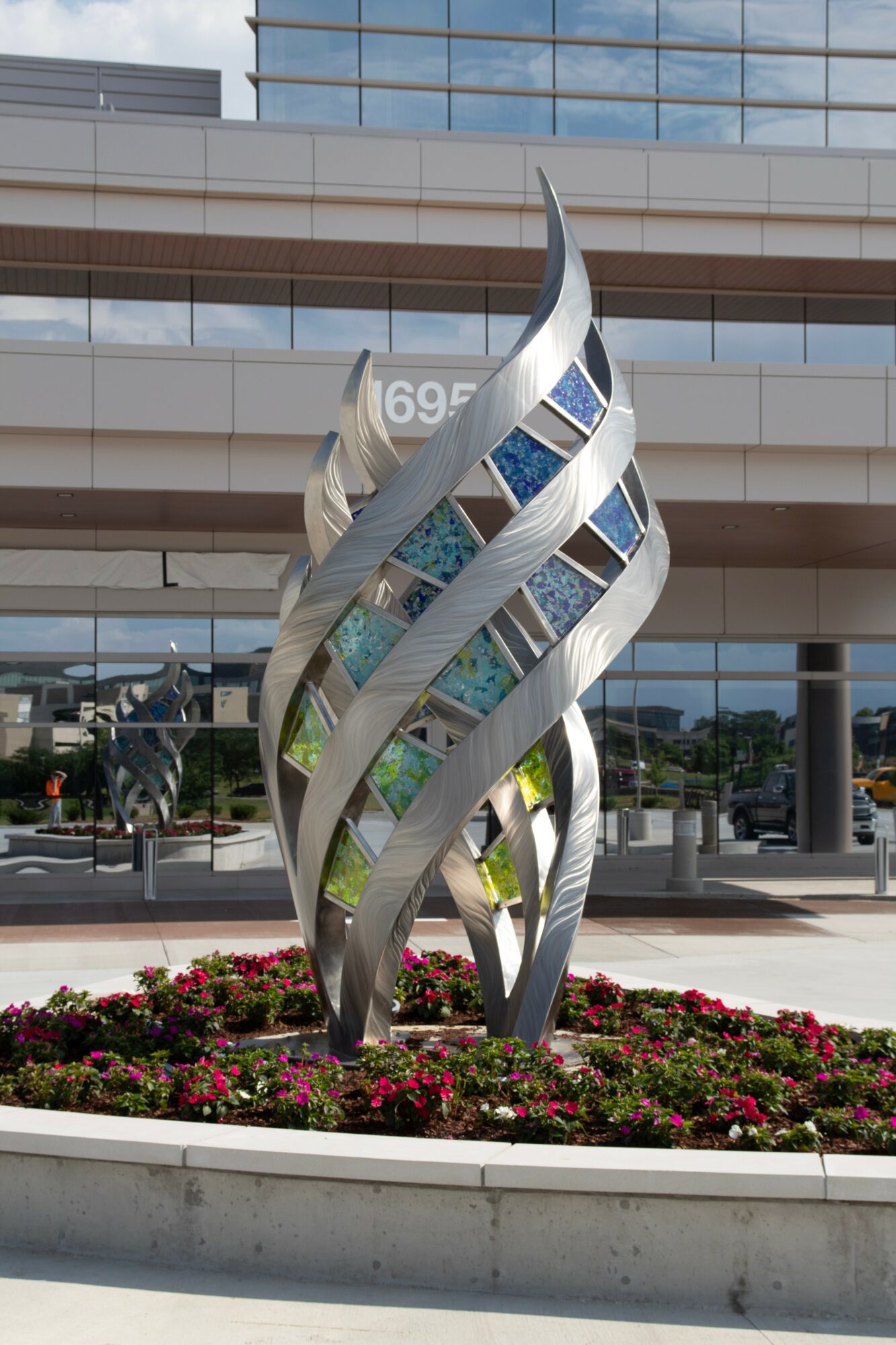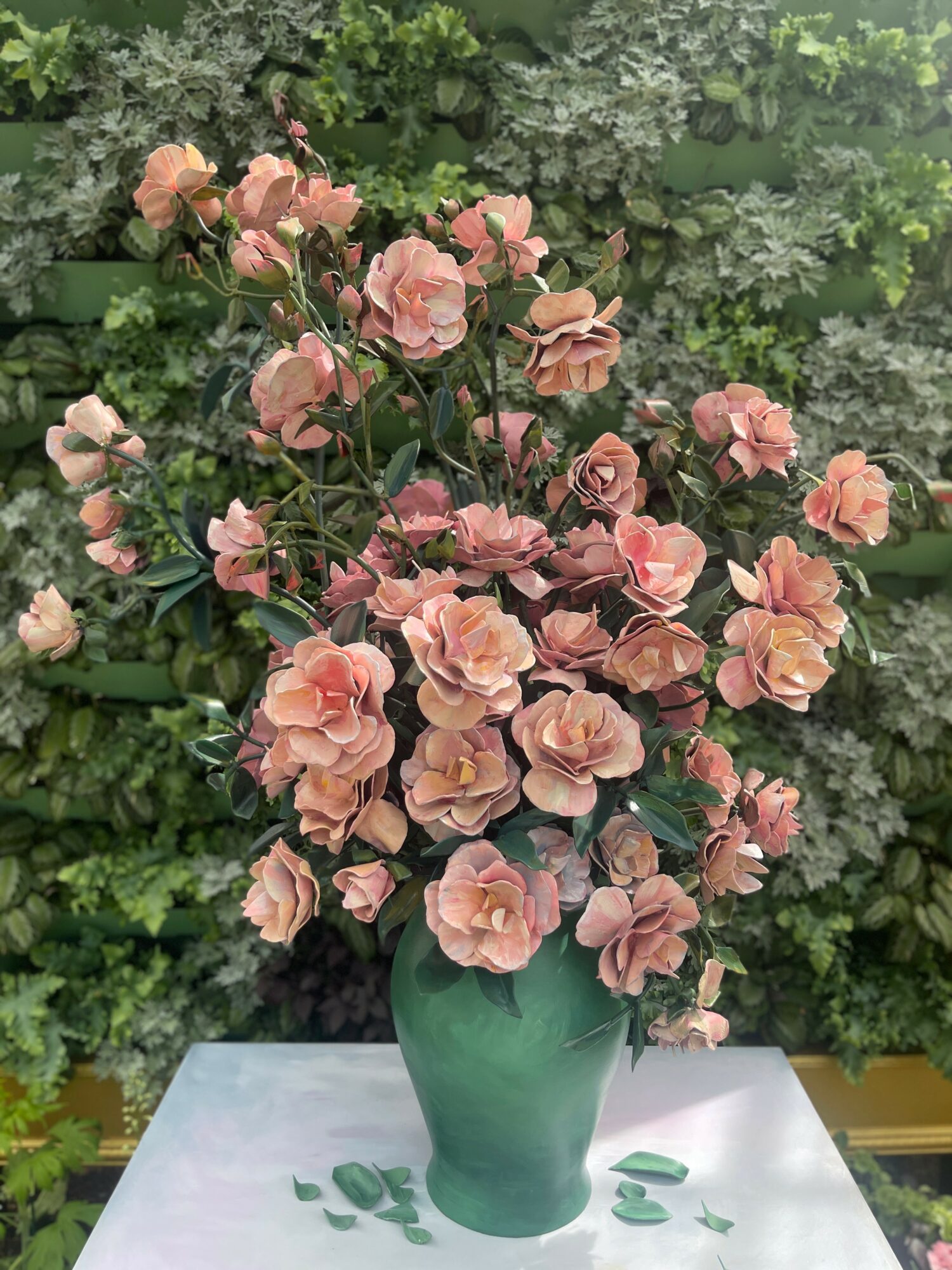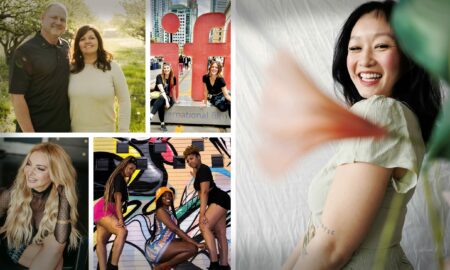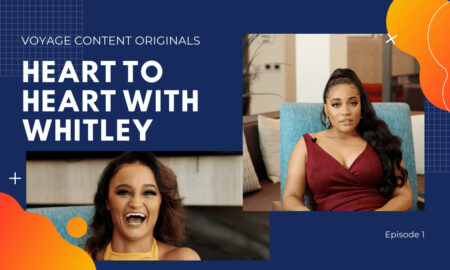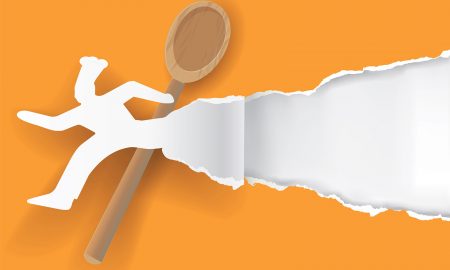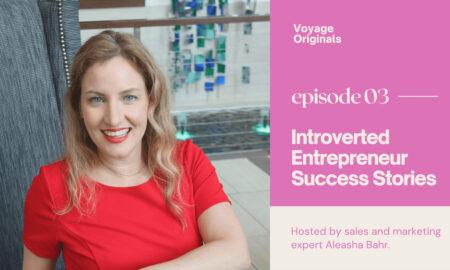Today we’d like to introduce you to Amie Jacobsen.
Amie, we appreciate you taking the time to share your story with us today. Where does your story begin?
I have been an artist all my life in one form or another. As a child, I imagined growing up to be a painter. I studied studio art and painting in college and began selling paintings in local galleries in Colorado, where I grew up.
After college, with two young children, I went through a divorce and became a single mom, which made pursuing a painting career improbable. I decided to use my drawing and painting skills in the commercial arts and tried my hand at illustration. To strengthen my skills and open opportunities to teach, I returned to school and earned an MFA in Illustration from the Savannah College of Art and Design (SCAD) in Savannah, GA. After completing the program, I was offered a teaching position and taught foundations and illustration courses on campus for a semester.
For family reasons, I left Savannah at the end of 2006 and moved to south Overland Park, Kansas, where I finished raising my kids. Around that time, SCAD was developing its e-Learning program and invited me to write and teach online illustration courses. I accepted, and alongside my growing list of illustration clients, I spent the next eight years teaching for SCAD e-Learning and working as a freelance illustrator and graphic artist—mostly for children’s books.
By 2015, one of my kids was in college and the other in high school. I was burned out—both from online teaching, where I never interacted with students in person, and from freelancing, which was creatively isolating and not financially sustainable. I was simply too slow an illustrator! I was ready to try something new. With my kids growing up, I finally had more flexibility and independence.
I began creating artwork for galleries again, returning to painting. Around that time, I had leftover construction materials from a home project and started painting on plywood, adding screws, nails, and other hardware into multimedia pieces. One night I wondered if incorporating metal might add something new—and if learning to weld could help me do that.
Not long after, I saw an episode of Arts Upload, a local PBS show spotlighting Kansas City–area artists. The segment featured a metal fabrication shop in the Crossroads called Machine Head, led by owner Dick Jobe, who was working with sculptor Beth Nybeck. I had no real plans for metalwork—just curiosity—but I was in an experimental phase creatively. The next day I called Machine Head and reached Dick. I asked if he knew where I could learn to weld. He said he sometimes took interns and that I could help around the shop with cleaning and errands while learning to weld. I was 40 years old—and decided to give it a try.
Two months later, I joined Machine Head full-time as the in-house designer and resident artist. Over the next two years, I learned all aspects of metal fabrication in a small, hands-on shop of just two or three people. I worked on everything from design and estimating to fabrication and installation. Although I enjoyed learning the technical side, my real passion was in art and design, and we focused on creative projects whenever possible. During that time, we completed several sculpture commissions, and I began building my portfolio. Dick was encouraging and gave me freedom to experiment and develop my own techniques. Through him, I met other metal artists and was introduced to the world of fabricated sculpture and public art.
In 2017, I applied for and won my first solo sculpture commission—a project large enough to allow me to purchase equipment and rent a small space to build the piece. From there, things grew quickly. I began collaborating with local woodworkers on custom furniture while continuing to pursue sculpture and public art. I eventually moved into a shared studio with glass artist Dierk Van Keppel, where I worked for three years surrounded by his luminous, colorful glass. This inspired me to begin incorporating glass—and eventually internal LED lighting—into my sculptures.
Since then, I’ve designed, fabricated, and installed sixteen permanent public artworks and numerous private commissions across the country, from Coral Springs, Florida to Fremont, California. In 2025, I was commissioned to create four sculptures for the New York Botanical Garden’s summer exhibition Van Gogh’s Flowers and recently installed works at AdventHealth’s new hospital in Lenexa and another at the BE Smith Family Center in Merriam, Kansas. I am currently creating a public art piece for the Kansas City Zoo, will have a large piece headed to Liberty, MO in the spring of 2026, and am collaborating with another local artist, Jake Balcom, on a large gateway sculpture for Springfield, Missouri, celebrating the 100th anniversary of Route 66 to be installed in March-April of 2026.
In 2018, I married Tim O’Neill, founder of The Urban Lumber Co. In 2020, we purchased a 17,000-square-foot building in Independence, Missouri, which now houses both my studio and fabrication shop on the main level and his woodshop below. I currently employ five assistant fabricators. Farris Wheel Studios, LLC is my design+build fabrication studio, specializing in public art and sculptural installations.
I’m sure it wasn’t obstacle-free, but would you say the journey has been fairly smooth so far?
There have definitely been struggles along the way. Some years were slower than others, and there have been plenty of setbacks—projects that didn’t go as planned, delays in materials, and challenges that forced me to adjust on the fly. The pandemic hit right in the middle of my business growth, which disrupted my workflow at first, but I kept going and worked straight through it.
Building a small team has also been a learning experience. Finding the right mix of personalities and skills takes time, and people come and go. But the biggest challenge has simply been growing through the normal pains of expansion. This past year has been my busiest yet, with more opportunities and more work than ever before. I’ve brought on new team members and pushed our capabilities further, and while it’s an exciting place to be, it is a lot to manage. Finding work/life balance is always a struggle.
Appreciate you sharing that. What else should we know about what you do?
My work includes fabricated sculpture, site-specific creative projects, and public art. I work primarily in steel and stainless steel, and sometimes aluminum, and I often incorporate glass, wood, acrylic, and LED lighting into my pieces. Most of my work is inspired by nature—I’ve created many botanical sculptures, but I also explore animal forms and abstract designs. My style tends to blend whimsy with elegance, using organic, twisting shapes and touches of color.
What sets me apart is that I’m not only the artist, but also the designer and fabricator. Some of my pieces are highly sculptural and made by hand—carved, painted, and formed one element at a time—while others are large-scale technical fabrication projects. I design and engineer all of my work, create detailed 3D models and fabrication drawings, and then build the pieces in my own fabrication studio, where I currently employ five assistants. I understand how materials behave, what will hold up outdoors, and how to problem-solve throughout the build. That ability to take a project from concept through construction—combining artistry, technical skill, and hands-on craftsmanship—is what defines my approach.
I am most proud of getting the opportunity to work with the New York Botanical Garden this year, and even getting mentioned by the MET in their social media feed in relation to the NYBG show. It was incredible to see my name and work in their feed.
We’d love to hear about any fond memories you have from when you were growing up?
I grew up in a very outdoorsy family in Colorado, and we loved to hike, fish, camp, ski, and hunt. When I was young, my grandfather built a large lodge and a five-acre lake—he even built the dam that formed it—on remote mountain land south of Gunnison. We spent every summer at “the lodge” (as we still call it), taking long weekends and getaways off the grid. It runs on a generator, and there was no TV, no internet, and barely even a radio signal —so when we are there, we truly unplug.
Every 4th of July, all the cousins, aunts, and uncles would gather at the lodge and then drive into Gunnison for the town’s big celebration. We’d set up a picnic in the park, grill burgers and brats, and play tag football or frisbee until the fireworks began. At night, we’d bundle up in sweatshirts and blankets in the cool mountain air and watch a fireworks show that lasted over an hour, complete with a storyline they narrated from loudspeakers—a full production.
By the time it ended, the kids would be half-asleep, and the adults would load us into trucks for the 45-minute drive back up the mountain. We’d wake the next morning to pancakes on the griddle and another day in the outdoors. My family still does this every year, and my own kids—now grown—grew up with the same 4th of July tradition.
I have countless “lodge” memories, and they are still some of my favorites.
Contact Info:
- Website: www.amiejacobsen.com and www.farriswheelstudios.com
- Instagram: @amiej_art and @farriswheel_studios
- Facebook: @amiejfineart and @farriswheelstudios
- LinkedIn: https://www.linkedin.com/in/amie-jacobsen/
